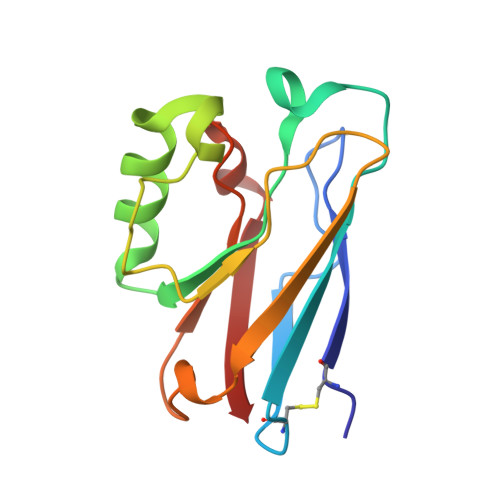Outer-Sphere Effects on Reduction Potentials of Copper Sites in Proteins: The Curious Case of High Potential Type 2 C112D/M121E Pseudomonas aeruginosa Azurin.
Lancaster, K.M., Sproules, S., Palmer, J.H., Richards, J.H., Gray, H.B.(2010) J Am Chem Soc 132: 14590-14595
- PubMed: 20879734
- DOI: https://doi.org/10.1021/ja105731x
- Primary Citation of Related Structures:
3NP3, 3NP4, 3OQR - PubMed Abstract:
Redox and spectroscopic (electronic absorption, multifrequency electron paramagnetic resonance (EPR), and X-ray absorption) properties together with X-ray crystal structures are reported for the type 2 Cu(II) C112D/M121E variant of Pseudomonas aeruginosa azurin. The results suggest that Cu(II) is constrained from interaction with the proximal glutamate; this structural frustration implies a "rack" mechanism for the 290 mV (vs NHE) reduction potential measured at neutral pH. At high pH (∼9), hydrogen bonding in the outer coordination sphere is perturbed to allow axial glutamate ligation to Cu(II), with a decrease in potential to 119 mV. These results highlight the role played by outer-sphere interactions, and the structural constraints they impose, in determining the redox behavior of transition metal protein cofactors.
- Beckman Institute, California Institute of Technology, Pasadena, California 91125, USA. kml04747@caltech.edu
Organizational Affiliation:


















